Gouba Elementary School is a small, unassuming institution located in Douliu, Yunlin County. Unknown to many locals, it was the site of one of many Japanese Prisoner of War camps during World War II. The camp was known as Toroku and was a school building at the time. Many of the prisoners were unfit for heavy duty, so they had easier jobs at the local sugar factory or in the nearby village. The commandant was apparently a kind old man and many prisoners later said it was the best camp they ever stayed in.
A bit of background: In early October 1944, a Japanese boat known as Hokusen Maro (AKA Haro Maro, AKA Benjo Maro [literally: floating shithouse]).1 left Manila, Philippines with more than 330 men aboard. The boat stopped briefly in Hong Kong before setting off again. In mid-October it was attacked by carrier planes before safely making it to Taiwan in late October. On November 8, it was unloaded and 294 prisoners, including Forrest Knox, were transported to Toroku Prison Camp on November 9. They stayed there for a while before being shipped back to Japan.
Gavan Daws, in his book Prisoners of the Japanese, sets forth a very gruesome description of the 39-day voyage from the Philippines to Taiwan:
Forrest [Kinder], in 90-degree Manila heat, wearing Japanese-issue cold-weather clothes–a winter trench coat with English buttons and a pair of hobnail boots–and with his burlap sack over his shoulder, had to go shuffling on his woodstumps of legs up the gangplank of the Haro Maru, a rusty little freighter that looked to weigh no more than a thousand tons, overloaded already, with Forrest and a thousand other white men staring down into the black hole of the holds.
There were two holds, forward and rear. The floor of one was covered with horse droppings, the other loose coal, sharp and dusty. Forrest drew the coal. he could not believe how many bodies the Japanese kept cramming in on top of him. The heat was fierce, tropical sun beating down on the steel plates of the deck and no air circulating below. A POW doctor in Forrest’s hold still had his clinical thermometer and the mercury shot straight up to 108 degrees, the highest it would register. If it had been a cooking thermometer it would have gone up past 120. Everybody shucked their cold-weather greatcoats and got down to G-strings. Forrest tied his towel around his head, the way the Japanese did, for a sweatband.
After two days the Haro Maru’s convoy still had not moved. The Japanese were not sending down anything like enough drinking water. The prisoners were raining sweat, and the sweat was starting to give off the stink of fear and madness.
Then Forrest let out a scream–his canteen was gone, stolen. If he did not get it back he was dead. For the better part of a day he kept his eyes glued to a rope the Japanese had hung down into the hold, because everything went up and down that rope: food buckets, slop buckets, canteens. The canteens were supposed to be numbered by owner. That did not last. But Forrest was sure he could recognize his. Finally he saw it coming down. And he saw a man pick it off. He struggled to get at him, wading through a swamp of bodies; men were passing out from the heat all around him and sliding down out of sight, other men were standing on bodies, and he had to step on bodies, feeling with his bare feet for the next step, and the space he opened up would suck closed behind him like human quicksand. He cornered the thief. He could see the canteen was his, it had his etchings on it, done with a nail at Cabanatuan. He was ready to kill the bastard. The thief could see it in his eyes; he backed off and held out the canteen, still full. It was all Forrest could do not to bash his skull in with it.
It gets much more gruesome from there, but you get the idea of why these transports were called “Hell Ships.”
When you get to Gouba Elementary School there are two entrances – the main one with the large gate and the smaller one. The memorial is directly in front of the smaller entrance.
Toroku Camp was formally memorialized on June 6, 2009.
The memorial reads
1944-1945
To the memory of all the men who were interned by the Japanese during WWII in the Toroku Prisoner of War Camp formerly located on this site.
We will remember them.
The stone bears the mark of TPOWCMS, which I found out stands for Taiwan P.O.W. Camps Memorial Society.
The last original camp buildings were torn down in 2003 – what you see at Gouba Elementary school today are new. According to the principal Xu Qing-Xun (å¾æ…¶å‹³), it was because of the lack of government subsidies for restoration work.2 It seems like an odd explanation, however, since he also said that he “didn’t realize the history of the school’s grounds until he learned it from the society, cultural historian Chen Nan-rung and other elderly people in the area.”3
Even though the school buildings were torn down, I spoke with an assistant at the school and he said that it is possible that the large facade inside of the main office building, which lies directly in front of the main entrance, could possibly be an original part of the camp, although he doesn’t know for sure and I haven’t been able to dig up any information on it.
All in all, it’s an interesting site to visit. If you happen to be passing through Douliu, I highly recommend you stop and check it out.
UPDATE:
A friend was kind enough to give me a copy of the Memorial Dedication Ceremony pamphlet. I’ve scanned it to a PDF file and am uploading it here. Enjoy!
Toroku POW Camp Memorial Dedication Ceremoney Pamphlet
Links of interest:
Toroku POW Camp
Never Forgotten – Taiwan POW Camp informational webpage
Taipei Times – Story of the Toroku Memorial.
Taiwan Info – Some information about the camp
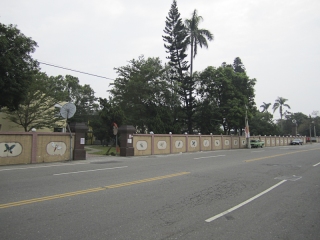
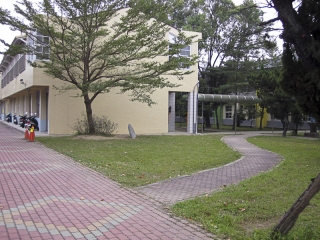
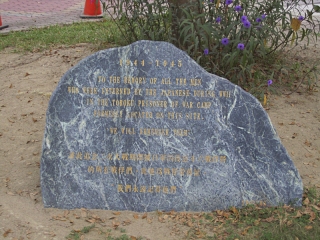
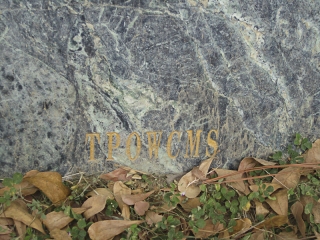
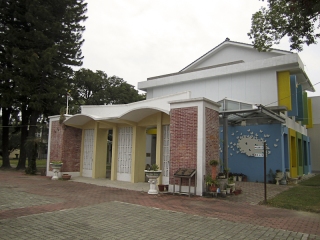
Leave a Reply